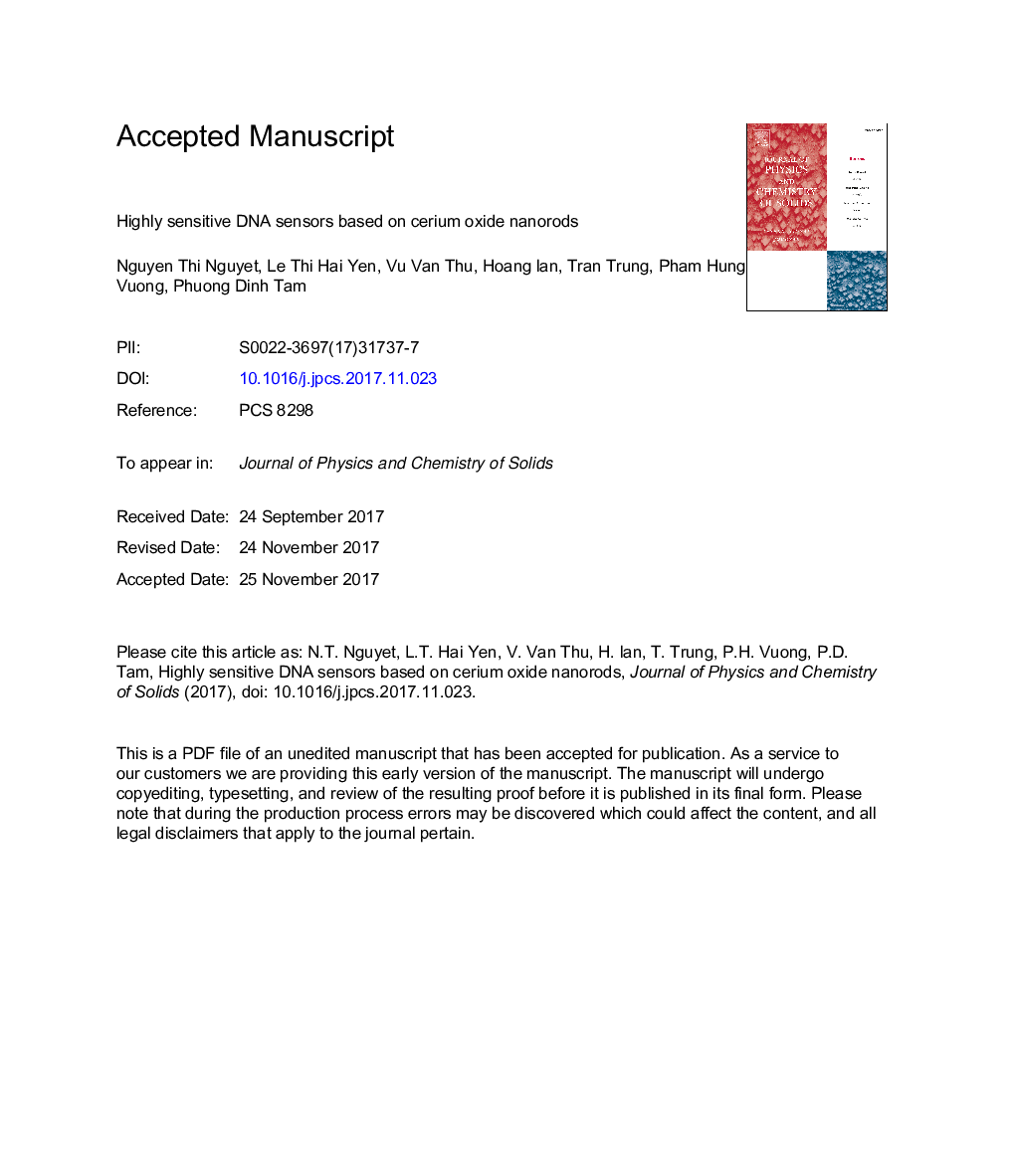| Article ID | Journal | Published Year | Pages | File Type |
|---|---|---|---|---|
| 7920391 | Journal of Physics and Chemistry of Solids | 2018 | 35 Pages |
Abstract
In this work, a CeO2 nanorod (NR)-based electrochemical DNA sensor was developed to identify Salmonella that causes food-borne infections. CeO2 NRs were synthesized without templates via a simple and unexpensive hydrothermal approach at 170 °C for 12 h by using CeO(NO3)3·6H2O as a Ce source. The DNA probe was immobilized onto the CeO2 NR-modified electrode through covalent attachment. The characteristics of the hybridized DNA were analyzed through electrochemical impedance spectroscopy (EIS) with [Fe(CN)6]3â/4â as a redox probe. Experimental results showed that electron transfer resistance (Ret) increased after the DNA probe was attached to the electrode surface and increased further after the DNA probe hybridized with its complementary sequence. A linear response of Ret to the target DNA concentration was found from 0.01 μM to 2 μM. The detection limit and sensitivity of the DNA sensor were 0.01 μM and 3362.1 Ω μMâ1 cmâ2, respectively. Various parameters, such as pH value, ionic strength, DNA probe concentration, and hybridization time, influencing DNA sensor responses were also investigated.
Related Topics
Physical Sciences and Engineering
Materials Science
Electronic, Optical and Magnetic Materials
Authors
Nguyen Thi Nguyet, Le Thi Hai Yen, Vu Van Thu, Hoang lan, Tran Trung, Pham Hung Vuong, Phuong Dinh Tam,
